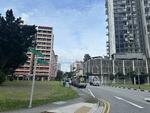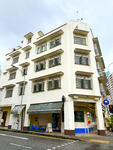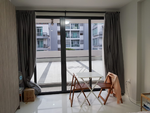Spices, culture and colour encapsulate the totality of District 8 which has come to be known as a tourist attraction, a cultural centre and a thriving commercial and residential hub. Little India has become synonymous with District 8, as it forms the main attraction of the area with its treasure troves of historical insight , authentic Indian cuisine, spices and textiles exported all the way from the Arab world. A common oversight is the property potential that Little India has, for it is close enough to the city without even acquiring the same hefty property prices. The average prices for a condominium like Cityscape and Oxford Suites generally ranged from $1,750 psf for a one-bedroom unit and $1,450 psf to $1,550 psf for a three-bedroom unit. As the Singapore property market continues to grow, and as new developmental initiatives are implemented, it is no surprise that investors are watching Little India closely.
As the name suggests, Little India was originally an extension of the prior Tamil enclave Chulia Kampong. It was allocated by the British colonialists to accommodate the overwhelming number of Tamil immigrants flocking to...
(Read More)
Spices, culture and colour encapsulate the totality of District 8 which has come to be known as a tourist attraction, a cultural centre and a thriving commercial and residential hub. Little India has become synonymous with District 8, as it forms the main attraction of the area with its treasure troves of historical insight , authentic Indian cuisine, spices and textiles exported all the way from the Arab world. A common oversight is the property potential that Little India has, for it is close enough to the city without even acquiring the same hefty property prices. The average prices for a condominium like Cityscape and Oxford Suites generally ranged from $1,750 psf for a one-bedroom unit and $1,450 psf to $1,550 psf for a three-bedroom unit. As the Singapore property market continues to grow, and as new developmental initiatives are implemented, it is no surprise that investors are watching Little India closely.
As the name suggests, Little India was originally an extension of the prior Tamil enclave Chulia Kampong. It was allocated by the British colonialists to accommodate the overwhelming number of Tamil immigrants flocking to Singapore. The location made it attractive to Tamil immigrants due to its location along the Serangoon River. It was easier for raising cattle and trade in livestock which formed their main livelihood.
Today, ethnic Tamils no longer occupy the area, and more heterogeneous communities have sprung up in Little India under the modern People’s Action Party (PAP) policy of racial harmony and cohesion. In fact, Little India has become more urbanized, and is now surrounded by several malls like the 24-hour shopping centre Mustafa Centre, The Verge, Little India Arcade, Serangoon Plaza and Singapore’s first eco-friendly mall City Square Mall. A wet market called Tekka Market also provides the freshest vegetables, fish, meat, spices and flowers. Sim Lim Square, Singapore’s perennial IT mall is also a few minutes’ walk away from Little India, making it especially convenient for residents in the area to purchase the latest IT gadgets.
(Less)












